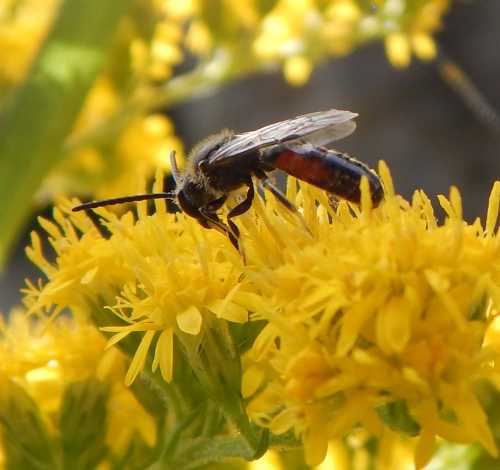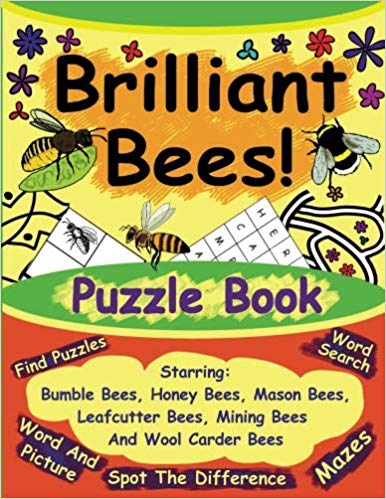Long-horned bee -
Eucera longicornis
Updated: 28th February 2021
I was very please to spot long horned bees close to where I live. The female was foraging on wallflowers on an old wall. More than likely I suspect there was also a nest in the same wall just around the corner - as I explain below.
Appearance of Eucera longicornis
On first glance, the female of this bee can easily be mistaken for an Anthophora species - see the male of the hairy-footed flower bee.
Below is an image of a long-horned bee, Eucera longicornis.
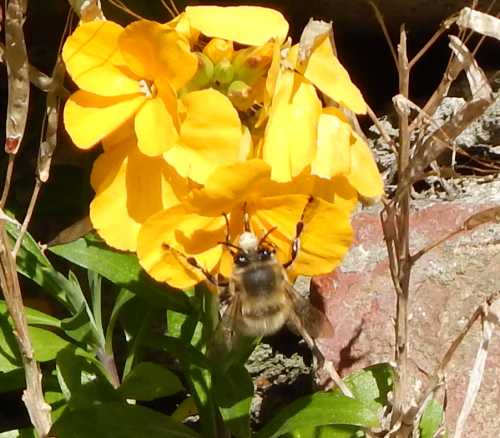 Long-horned bee, Eucera longicornis
Long-horned bee, Eucera longicornisGiven that this species is the 'long-horned bee', and its Greek name 'Eucera' means 'well horned', you may be wondering about that from the pictures above - i.e "where are the long horns?".
Well, the image above is of a female, and only the males have long horns (i.e. long antennae) as in the photograph below.
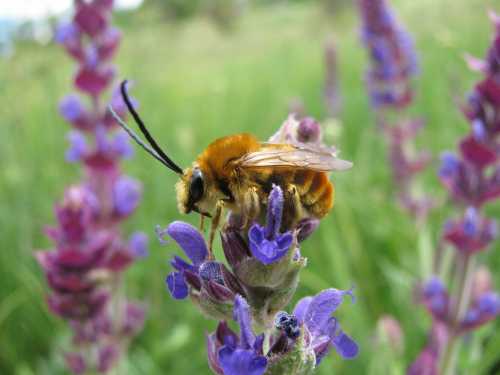 Long-horned bee, Eucera longicornis male
Long-horned bee, Eucera longicornis maleBelow is a further photograph of the male long-horned bee, taken from Wikipedia.
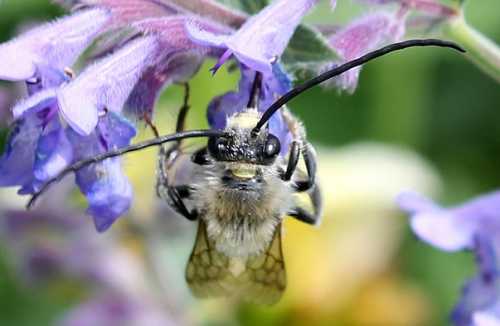 Long-horned bee, Eucera longicornis - male. Photograph by Cheryl Cummings; under Wikimedia Commons Licence.
Long-horned bee, Eucera longicornis - male. Photograph by Cheryl Cummings; under Wikimedia Commons Licence.Life cycle and nesting habits of Eucera longicornis
Males are around from May, with females appearing a week or two later. Females may be seen through to August. They create burrows in sparsely eroded soil on south facing slopes, old walls or cliff faces. They tend to nest in aggregations.
Foraging habits of the long-horned bee
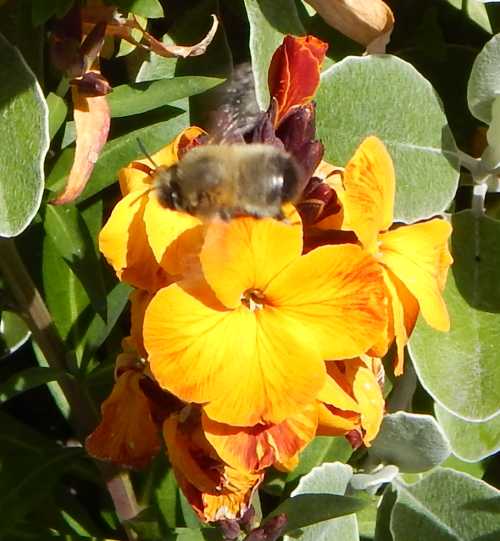 Long-horned bee, Eucera longicornis female on wallflowers
Long-horned bee, Eucera longicornis female on wallflowersMost text book writings I have come across note that this particular species feeds primarily on flowers from the pea family (Fabaceae) - such as clovers, vetches, bird's foot trefoil. However, British organisation: BWARS (Bees Wasps And Ants Recording Society) also mentions geranium, bramble, heathers, comfrey and members of the Boraginaceae, Lamiaceae (such as Bugle - Ajuga reptans) and Liliaceae. Radish (Raphanus spp) are also mentioned, which is a member of the Brassicae family - the same family as the Wallflower.
Parasites of the long-horned bee
This is a cleptoparasite of the long-horned bee: the six-banded nomad bee - Nomada sexfasciata.
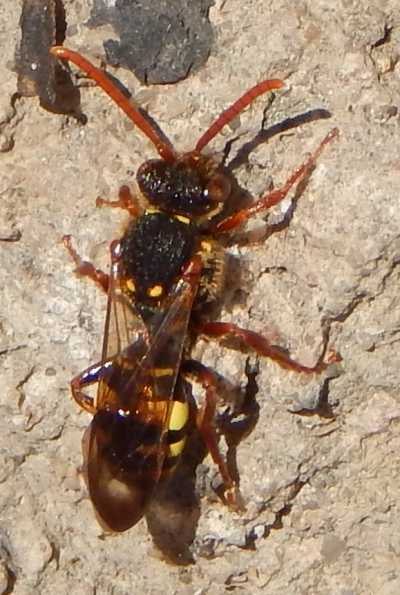 Six-banded nomad bee - Nomada sexfasciata - cleptoparasite of the Long-horned bee.
Six-banded nomad bee - Nomada sexfasciata - cleptoparasite of the Long-horned bee.In fact, if you spot these bees patrolling an area of wall or rock face, it's likely there will be long-horned bees nesting there - but beware - nomad bees can look very similar!
There are similar nomad bees, for example, that target mining, plasterer and mason bees among others.
If you found this page helpful or interesting, I'd really be grateful if you would share it with others - if not this page, perhaps another, such as Gardening For Bees.
Thank you so much :) .
